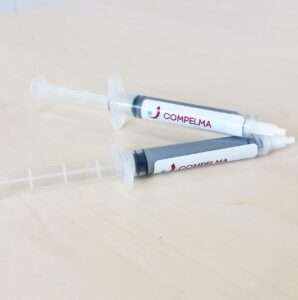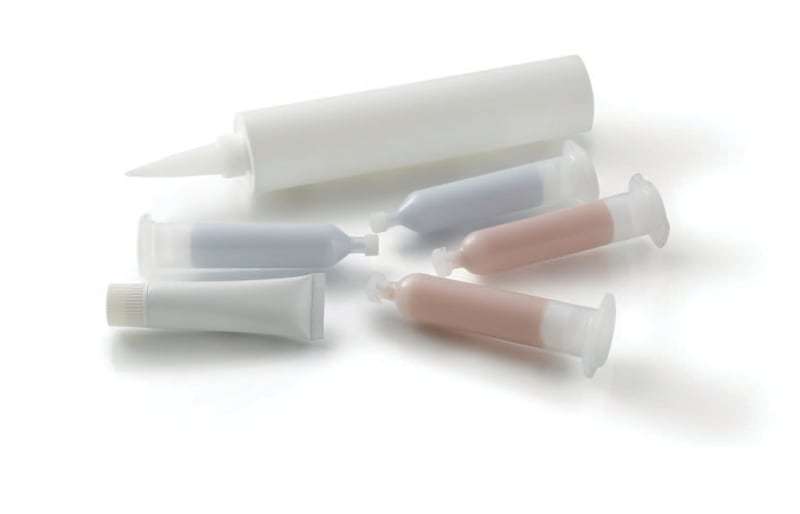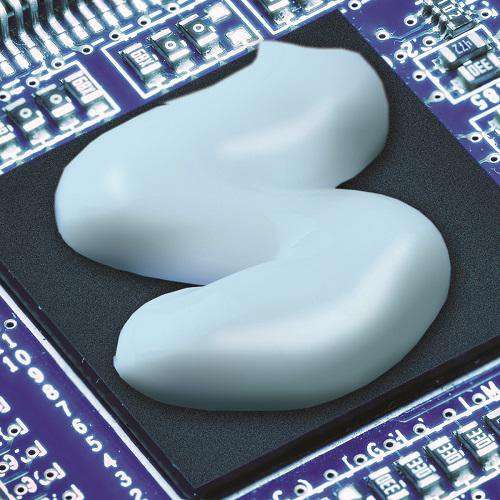What is Thermal Paste and What is it Used For?
Thermal Paste: Definition and Composition
Thermal paste is a substance used to improve the thermal conductivity between two surfaces in contact, mainly in electronic and mechanical equipment. Its role is to ensure effective heat dissipation and thus prevent the overheating of critical components.
The composition of thermal paste varies, but it usually consists of:
- Silicone as a base for its thermal stability and flexibility.
- Ceramic for its excellent thermal conduction properties without being electrically conductive.
- Metal particles to further enhance thermal conductivity.
Its presence is essential in the thermal management of industrial systems. Indeed, it ensures efficient heat transfer between surfaces. Its composition and correct application are crucial to maximize equipment performance and prevent issues related to overheating.
How Does Thermal Paste Work?
Thermal paste can fill the micro-air gaps present between the surfaces in contact (for instance, a processor and a heat sink). These micro-air gaps, although small, act as thermal insulators and can hinder heat transfer. By applying a layer of thermal paste, these gaps are filled, allowing for better heat conduction.
Ultimately, thermal paste improves thermal conductivity by:
- Creating a more uniform interface;
- Increasing the contact surface between components.
This function reduces thermal resistance and allows for more efficient heat dissipation generated by electronic or mechanical components. By eliminating micro-air gaps, thermal paste helps maintain lower operating temperatures, thereby extending the lifespan of the equipment.
When to Use Thermal Paste?
 Thermal paste is useful in numerous scenarios. In the field of industrial electronics and computing, this component is indispensable to optimize the performance and reliability of equipment.
Thermal paste is useful in numerous scenarios. In the field of industrial electronics and computing, this component is indispensable to optimize the performance and reliability of equipment.
Servers and telecommunications systems, for instance, generate a significant amount of heat. Using thermal paste between processors and heat sinks helps maintain secure operating temperatures.
Power electronics devices also require efficient thermal management to ensure their continuous operation. Thermal paste is used to improve heat transfer between power transistors, diodes, and their heat sinks.
In the automotive industry, especially for electric and hybrid vehicles, thermal management is crucial for the batteries, electric motors, and electronic control systems. It is applied to ensure efficient heat transfer between these components and their cooling systems. Lastly, it is often present in industrial machinery or production equipment (3D printers, robots, etc.). Applying thermal paste in these contexts allows for efficient heat dissipation, preventing malfunctions and unexpected shutdowns.
How to Well Choose Thermal Paste in an Industrial Application?
Noting Thermal Conductivity
Thermal conductivity is one of the most important criteria to consider when choosing a thermal paste for an industrial application. It measures the paste’s ability to transfer heat between contact surfaces. High thermal conductivity means that the paste can dissipate heat more efficiently. This feature is particularly important for applications where components generate a significant amount of heat.
To assess thermal conductivity, review the technical specifications provided by the manufacturer. Generally, metal-based thermal pastes often offer superior thermal conductivity. However, they may be electrically conductive, posing risks in certain applications. Ceramic or silicone-based pastes, while slightly less thermally conductive, offer excellent electrical insulation and may be more suitable for some uses.
Understanding Viscosity
Viscosity of the thermal paste influences its ease of application and its ability to evenly cover surfaces. A paste that is too viscous can be difficult to spread, leading to air bubbles or uncovered areas, reducing thermal efficiency. Conversely, a paste that is too fluid may flow and not stay in place, especially in environments with vibrations or mechanical movements.
Choose a paste with a viscosity suitable for your application method and the environment in which it will be used. For applications where the paste needs to be applied manually, a medium viscosity that allows for uniform application without too much effort is often ideal. In automated environments, where robots or dispensing systems may be used, the paste must have a viscosity compatible with these systems to ensure precise application.
Application Technique for Thermal Paste: Practical Tips
Preparing Surfaces Properly
Before applying thermal paste, properly prepare the contact surfaces. Any contamination, such as dust, oils, or residues from previous applications, can reduce the effectiveness of the thermal paste.
Use specific cleaners for electronic components and lint-free cloths to clean the surfaces. Ensure they are completely dry before applying the paste.

Applying the Right Amount of Thermal Paste
A common mistake is applying too much or too little thermal paste. Excessive amounts can lead to overflow and create short circuits, especially if the paste is electrically conductive. Conversely, insufficient quantities will not properly fill the micro-air spaces, reducing thermal efficiency.
For industrial applications, follow the manufacturer’s recommendations regarding the amount to use and the tools to achieve precise application.
Choosing the Right Application Technique
Various techniques exist for applying thermal paste, and the method chosen may depend on the size and shape of the surfaces to be covered:
- Point Method: Apply a small amount of paste at the center of the surface, then use an applicator or controlled pressure to spread the paste as the surfaces are pressed together. This method is effective for small to medium-sized surfaces.
- Spreading Method: Use a spatula or a specially designed applicator to spread the thermal paste in a thin, even layer over the entire surface. This method is ideal for larger surfaces and ensures complete coverage.
- Cross Method: Apply the paste in a cross or line pattern on the surface, then spread it by pressing the surfaces together. This technique can help distribute the paste more evenly, especially on irregular surfaces.
Finally, consider incorporating regular checks of the thermal paste’s condition into maintenance plans. Thermal paste can degrade over time, especially in industrial environments subject to thermal cycles and vibrations. If reapplying is necessary, ensure to completely remove the old paste and prepare the surfaces again to guarantee maximum effectiveness.
Do you wish to use thermal paste for your industrial applications? Contact the Compelma team to determine which type of paste to choose and how to use it to maximize the thermal management of your equipment.

